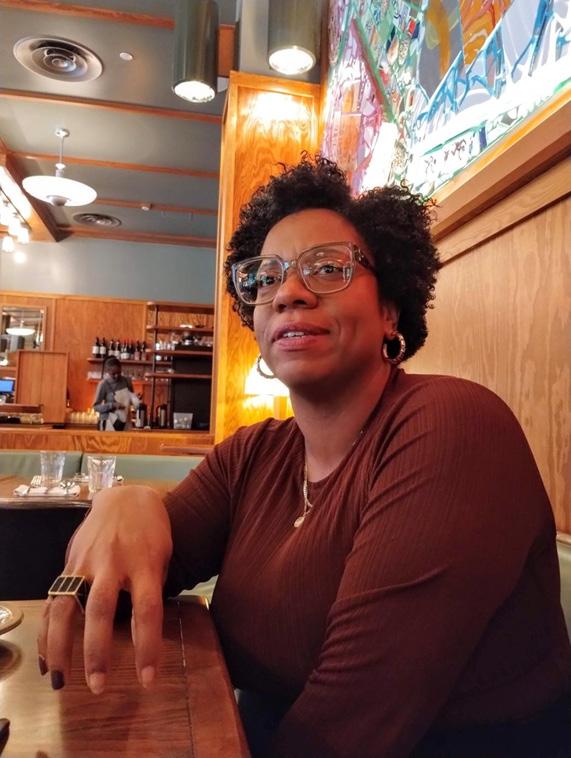
3 minute read
BAM’s President Gina Duncan wants to connect artists with diverse audiences
By KAREN JUANITA CARRILLO Amsterdam News Staff
Gina Duncan has found her way back to Brooklyn.
Duncan first made her mark here when she served as associate vice president of the Brooklyn Academy of Music (BAM) film program in 2017. She stood out for having changed the curatorial perspective of the BAM film series. At a time when the #OscarsSoWhite movement was questioning why white actors were consistently the main nominees for the prestigious Academy Awards, Duncan decided to challenge the white predominance in cinema in another way.
“I felt like that was a very limiting way to look at the history of women and people of color in film. Because when you say #OscarsSoWhite, the knee jerk reaction is no one else is there and that’s an erasure of the people who have come before us,” she explained. “So, I took our curated program–which was largely a celebration of the quote-unquote film masters, a canon of largely white filmmakers–and I had it all focus on Black and brown people and women who have come before us. For 365 days a year, we were showing films with Black and brown people and women, by them and featuring them.”
BAM’s marketing team initially thought Duncan’s new curatorial direction would alienate the institution’s audience. Instead, it helped broaden BAM’s reach and garnered the film program wider recognition. Duncan says that’s because the films they began showing were works that were rarely discussed or even recognized but had been influencing filmmakers for years.
Her transformation of BAM’s film program led to the offer of a job as the producing director with the Sundance Institute where she produced the Sundance Film Festival and managed the Institute’s year-round operations. Now, she’s been brought back to BAM—this time to serve as the first Black, female president of the over 150-year-old arts institution in its history.
Born in The Bronx to Jamaican immigrants, Duncan’s family moved to Mount Vernon and later Delaware where she was predominately raised. “We didn’t know it at the time,” she laughs, “but there were actually a lot of Jamaicans in Delaware then. Bob Marley had moved there because his mother had moved there with her new husband. So, both Bob Marley and Bunny Wailer lived in Delaware: they worked in the Chrysler plant making cars before they became famous. So, yeah, we found our people.”
The entrepreneurial spirit of Duncan’s mother, Clover Duncan, and grandmother, Lynnette Hunter, provided Gina with examples of how to find her place in the wider world. Her grandmother had run and operated her own bakery in Jamaica. In the U.S., she started working as a home health aide for wealthy clients. When Gina occasionally accompanied her grandmother on visits, she says she got to both see the environment wealthy people were able to create for themselves, and to watch the
Black New Yorker
way her grandmother situated herself in that space. “I saw that backbreaking labor and care that she provided, which wasn’t always appreciated. She had me there for a purpose: to see that and also to really work hard and ‘study my books,’ as she’d always say, so that I could figure out my path.”
When her mother immigrated to the U.S. she came without a college degree, yet Clover Duncan went on to climb the corporate ladder. By the time she retired she left work as a vice president at the multinational financial services firm JPMorgan. “They were two women who just figured out how to make a way through their intelligence and just their understanding of people,” Duncan recalls.
When Duncan started her own work life, she began by making football documentaries with NFL Films at age 21. “I had no experience in football,” she admits. And she found herself in a very male-oriented organization. But it was the place that taught her how to stand up and fight for herself. “I got the job based on the fact that I was a really good storyteller. Steve Sabol, who founded NFL Films, felt like he could teach anyone how to make a film, but he couldn’t teach anyone how to tell a story. So that was the skillset I came into that job with.”
When she was named president of BAM, some people questioned if her ability to successfully run film programs also meant that she could operate an institution dedicated to promoting the performing arts. Duncan has an answer to that question: “My entire career has been about telling stories and supporting artists. That, I think, is the No. 1 responsibility of the president of an organization: being able to articulate a clear story about the institution, its past and where it’s going and how this institution supports the artists that it presents. That’s something that I feel really, really strongly about.
“The purpose of BAM is to support artists by connecting them with diverse audiences. For these artists to have sustainable careers, they need to be able to draw more than just their base. So, I think BAM’s role is to help them and help contextualize the work that they’re creating so that different kinds of people can find their ways to work that they may not necessarily have known about previously.”










